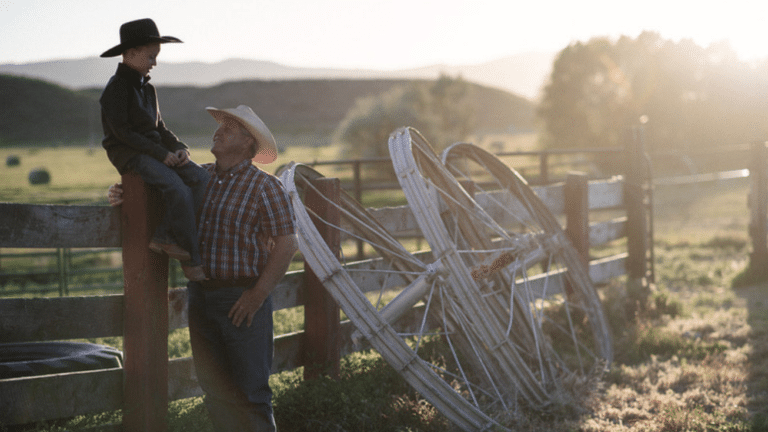Using Farm Cash Flow Statements to Assess Operational Health
Make more informed financial decisions by understanding your farm cash flow.
A farm cash flow statement documents the movement of money in and out of your farming operation during a specific period, usually a month or a year. It includes the inflow and outflow of things like crop sales, operating expenses, loan repayments, utilities, insurance premiums, and government subsidies.
Understanding and managing cash flow is crucial for farmers as it enables them to assess their financial health, plan for expenses, and make informed decisions about investments and resource allocation.
In this article, we’ll teach you how to interpret a cash flow statement to make more informed financial decisions for your farm.
Is Your Farm Cash Flow in Good Standing?
Get a quick understanding of your farm’s key financial ratios with our free health check calculator.
Farm Cash Flow Statements: Key Terminology
There are many different terms and documents for farm financing strategies. Here are four common terms that often seem similar at first glance.
Farm Cash Flow Statement: A cash flow statement is a financial report that summarizes the cash inflows and outflows of a farm operation over a specific period, typically a month, quarter, or year. It categorizes cash flows into three main activities: operating, investing, and financing. The farm cash flow statement provides insights into the sources and uses of cash, helping farmers assess liquidity, monitor financial performance, and make informed decisions about budgeting, investments, and debt management.
Cash Budget: A cash budget is a financial plan that outlines projected cash inflows and outflows over a specified period. It provides a detailed forecast of expected revenues and expenses, helping farmers anticipate cash shortages or surpluses and plan accordingly. It differs from a cash flow statement mainly because it is a projection rather than a summary.
Cash Position: The cash position refers to the amount of cash and cash equivalents that a farmer currently holds at a specific point in time. It represents the liquidity or availability of cash resources that can be used to meet immediate financial obligations or invest in the operation.
Balance Sheet: A balance sheet shows your farm’s assets and liabilities, like crops, livestock, land, tractors, and debt. A balance sheet shows the assets and liabilities that result, in part, from the activities on the cash flow statement. The ending cash balance in the cash flow statement affects current assets on the balance sheet.
Farm Cash Flow Statement Example
Below is an example of a simplified cash flow statement for a citrus operation and how different activities are reflected on the statement month-over-month.
For the Month Ended January 31, 2024
Citrus Sales
$15,000
Government Subsidies
$3,000
Total Cash Inflows
$18,000
Operating Expenses
Seeds and Fertilizers
$5,000
Pest Control
$2,000
Labor and Wages
$6,000
Utilities
$1,500
Total Operating Expenses
$14,500
Net Cash Flow (Inflows - Outflows)
$3,500
In January, the citrus farm received $15,000 from citrus sales and $3,000 in government subsidies, totaling $18,000 in cash inflows. The farm incurred operating expenses totaling $14,500, including costs for seeds, fertilizers, pest control, labor, and utilities. After deducting the outflows from the inflows, the net cash flow for January is $3,500.
For the Month Ended February 29, 2024
Citrus Sales
$20,000
Government Subsidies
$2,500
Total Cash Inflows
$22,500
Operating Expenses
Seeds and Fertilizers
$6,000
Pest Control
$2,500
Labor and Wages
$7,000
Utilities
$1,500
Total Operating Expenses
$17,000
Investing Activity
Purchase of New Farm Equipment
$5,000
Financing Activity
Drawing from Line of Credit (LOC)
$4,500
Total Cash Outflows
$26,500
Net Cash Flow (Inflows - Outflows)
-$4,000
In February, the citrus farm received $20,000 from citrus sales and $2,500 in government subsidies, totaling $22,500 in cash inflows. The farm incurred operating expenses totaling $17,000, including costs for seeds, fertilizers, pest control, labor, and utilities. Additionally, the farm invested $5,000 in purchasing new farm equipment.
To finance this capital expenditure, the farm drew $4,500 from a Line of Credit (LOC). After deducting all outflows from the inflows, the net cash flow for February is -$4,000. This negative cash flow indicates that the farm had to use financing, specifically the LOC, to cover the costs of the new farm equipment, resulting in a decrease in cash reserves for the month.
Estimating Operational Health with Farm Cash Flow
There are many factors that play into your farm’s overall financial health. But farm cash flow can be a strong indicator of performance.
Positive cash flow means your operation is increasing its cash position and accumulating reserves. A strong positive cash flow enhances liquidity and financial stability, providing your farm with resources to cover input expenses, invest in growth opportunities, repay debt, and weather financial challenges.
Negative cash flow means your operation’s cash position is declining, and you may need to rely on reserves or loans to cover operational expenses. Negative cash flow can strain liquidity and financial health, potentially leading to cash shortages, missed payments, and difficulties in meeting financial obligations. If your cash flow statement often shows negative cash flow, it may indicate a need to evaluate your expenses or find a financial partner to help you offload some of your financial obligations.
Cash to Current Assets Ratio
Although a positive or negative cash flow is a simple overall indicator, a more granular way to evaluate your farm’s financial health is by using a cash to current assets ratio.
Vulnerable financial position. You may lack liquidity, have difficulty managing cash flow, or have a limited capacity to invest.
Fair financial position. You have better cash flow management, increased capacity for investments, and a reduced dependency on external financing.
Excellent financial position. You have high liquidity, strong cash flow management, reduced financial risk, and more financial flexibility.
How to Use a Farm Cash Flow Statement to Plan Ahead
Having a regularly updated cash flow statement allows you to look back at inflows and outflows and make predictions about the future.
For example, when applying for a loan like a Revolving Line of Credit (RLOC), you can use the cash flow statement to determine the amount of funds you’ll need. Cash flow statements estimate your farm’s working capital requirements. When you create monthly or annual reports, you can easily identify if there is a gap in your working capital.
Due to the seasonal nature of farm income, your operation may experience short-term cash shortages, like during planting season when input costs are high. You can estimate how much money you’ll need to cover the shortage by looking back on previous periods.
You can also create a pro forma farm cash flow statement, which is similar to a cash budget, but has finer detailed projections you’d find in a normal farm cash flow statement. For example, a corn farmer may want to estimate how much money he will make from crop sales this year. How would his income be affected if corn commodity prices were $5.00 instead of $4.50?
Get the Information You Need to Build Financial Resilience in 2024
Creating a farm cash flow statement is a crucial part of planning for your operation’s financial future. But to truly grow your farm’s resiliency and prepare for the coming year, you need to have a strong understanding of the agricultural economy.
When you partner with AgAmerica, you gain access to resources, experts, and tools to support you in managing your farm cash flow more effectively.
Ready to level up your operation’s finances? Speak with one of our agricultural finance experts today.

Dr. John Penson Jr. is the Chief Economist at AgAmerica Lending. He has held esteemed positions as a Regents Professor and Stiles Professor in the Department of Agricultural Economics at Texas A&M University.






